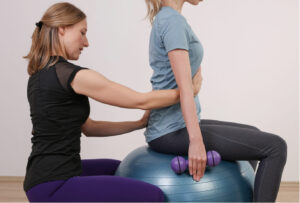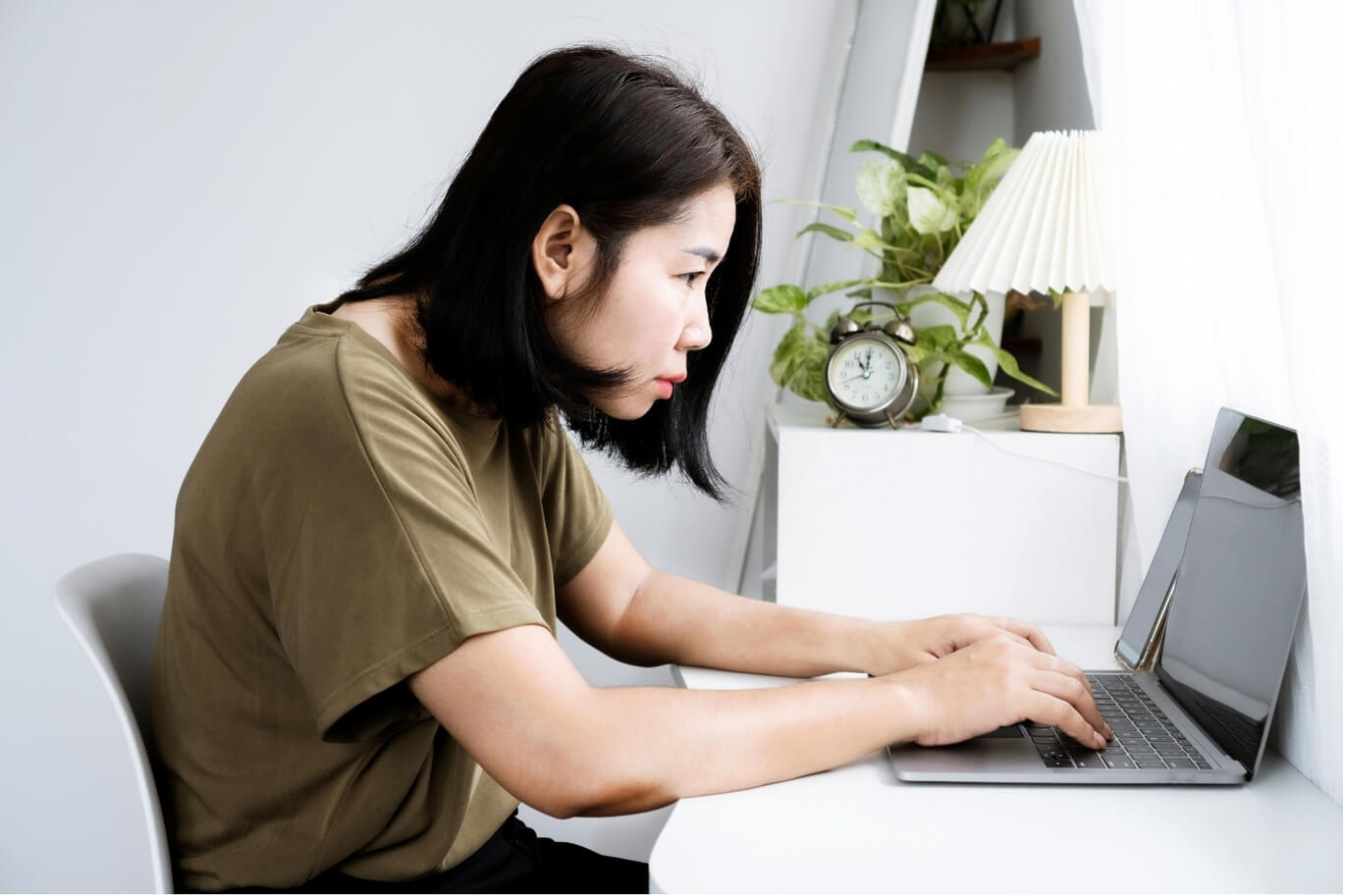If you’ve ever spent hours slumped over a computer or hunched over your phone, you’ve likely felt the consequences in the form of neck pain or a throbbing headache.
This blog will explore the 4 strategies we use at Brisbane Headache and Migraine Clinic to overcome headaches and migraines related to posture.
What many people don’t realise is that poor posture isn’t just uncomfortable – it can actually be a major trigger for headaches and migraines.
In fact, studies show that posture-related headaches are more common than you might think. up to 75% of people with tension-type headaches report some degree of neck pain or stiffness associated with poor posture. Moreover, around 23% of people who experience frequent migraines report that their episodes are directly triggered or worsened by bad posture during work or leisure activities.
But there’s good news! By addressing these postural imbalances, we can help reduce the frequency and severity of your headaches, getting you back to living pain-free.
How Poor Posture Causes Headaches
When your posture is off, particularly if your head is constantly pushed forward or your shoulders are rounded, the muscles in your neck and upper back work overtime.
This strain creates tension, may compress nerves, and can lead to different types of headaches, including tension headaches and even migraines.
Some of the common postural habits that contribute to headaches include:
- Forward head posture: When the head is positioned too far forward, it adds pressure on the neck muscles.
- Rounded shoulders: Slumping causes muscle imbalances, tightening certain areas while weakening others.
- Sitting too long: Prolonged sitting without proper posture can strain the entire neck and back region.
How We Can Help
If you’re struggling with posture-related headaches or migraines, a personalised treatment plan can offer an effective, non-invasive solution.
By addressing the root causes of your poor posture, we can help you reduce headache triggers and improve your overall comfort. Here’s how we approach this:
1. Postural Assessment and Correction
- Start by evaluating your posture and identifying areas of imbalance or tension.
- Based on this assessment, a customised plan is developed to help correct postural issues like forward head posture or rounded shoulders.
2. Ergonomic Advice
- Simple adjustments to your workspace can make a big difference. We can provide ergonomic advice to improve your desk setup, reducing the strain on your neck and back.
3. Manual Therapy
- Techniques such as soft tissue release, joint mobilisation, and muscle relaxation can reduce the tension in your neck and shoulders that contributes to headaches.
4. Strengthening and Stretching Exercises
- Exercises that target weak muscles, helping you maintain better posture throughout the day.
- Stretching tight muscles can also reduce tension and alleviate headache symptoms. A study found that strengthening and stretching exercises can significantly reduce the frequency of tension-type headaches
Take Control of Your Headaches Today
If poor posture is contributing to your headaches or migraines, addressing these imbalances is a great first step toward relief.
By correcting posture, strengthening muscles, and reducing tension, our treatments can make a big difference in your headache management.
At Brisbane Headache and Migraine Clinic, our clinicians adopt the Watson Headache Approach, a conservative and non-invasive plan, to manage your symptoms conservatively.
Book an appointment with us at Brisbane Headache and Migraine Clinic at 1800 432 322 and start your journey toward a headache-free life!
Written by:
References
Fernández-de-Las-Peñas, C., Pérez-Martín, A., Gómez-Conesa, A., & Cuadrado, M. L. (2019). The association between forward head posture and chronic tension-type headache in adults: a systematic review. The Journal of Pain, 20(1), 1-9. doi:10.1016/j.jpain.2019.05.007.
Castien, R. F., van der Windt, D. A., & de Hertogh, W. (2016). Effectiveness of manual therapy for chronic tension-type headache: a pragmatic, randomized, controlled trial. Manual Therapy, 22, 122-130. doi:10.1016/j.math.2016.06.010.
Ylinen, J., Takala, E. P., Nykanen, M., Hakkinen, A., Malkia, E., Pohjolainen, T., & Karppi, S. L. (2007). Active neck muscle training in the treatment of chronic neck pain in women: a randomized controlled trial. JAMA, 296(7), 839-847. doi:10.1001/jama.296.7.839.










